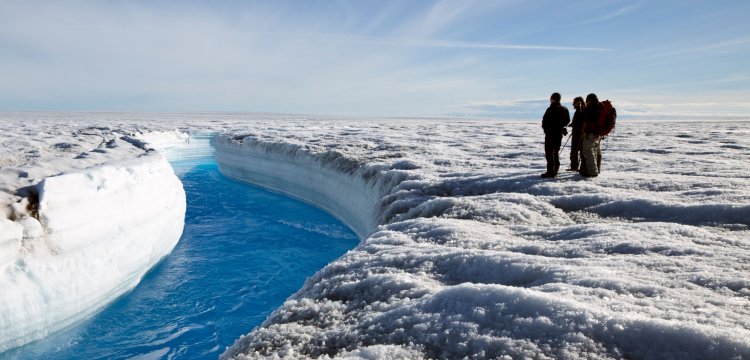Climate Change Breaks Up Parts Of The Greenland Ice Shelf

A big chunk of ice has broken away from the Arctic's largest remaining ice shelf - 79N, or Nioghalvfjerdsfjorden - in north-east Greenland.
The ejected section covers about 110 square km; satellite imagery shows it to have shattered into many small pieces.
The loss is further evidence say scientists of the rapid climate changes taking place in Greenland.
"The atmosphere in this region has warmed by about 3C since 1980," said Dr Jenny Turton.
"And in 2019 and 2020, it saw record summer temperatures," the polar researcher at Friedrich-Alexander University in Germany told BBC News.
Nioghalvfjerdsfjorden is roughly 80km long by 20km wide and is the floating front end of the Northeast Greenland Ice Stream - where it flows off the land into the ocean to become buoyant.
At its leading edge, the 79N glacier splits in two, with a minor offshoot turning directly north. It's this offshoot, or tributary, called Spalte Glacier, that has now disintegrated.
The ice is being attacked from above and below.
The ice feature was already heavily fractured in 2019; this summer's warmth has been its final undoing. Spalte Glacier has become a flotilla of icebergs.
Look closely at the satellite pictures and the higher air temperatures recorded in the region are obvious from the large number of melt ponds that sit on top of the shelf ice.
The presence of such liquid water is often problematic for ice platforms. If it fills crevasses, it can help to open them up. The water will push down on the fissures, driving them through to the base of the shelf in a process known as hydrofracturing. This will weaken an ice shelf.
Oceanographers have also documented warmer sea temperatures which mean the shelf ice is almost certainly being melted from beneath as well.
79N became 'the largest remaining Arctic ice shelf' only fairly recently, after the Petermann Glacier in northwest Greenland lost a lot of area in 2010 and 2012- as explained Prof Jason Box from the Geological Survey of Denmark and Greenland (GEUS).















































